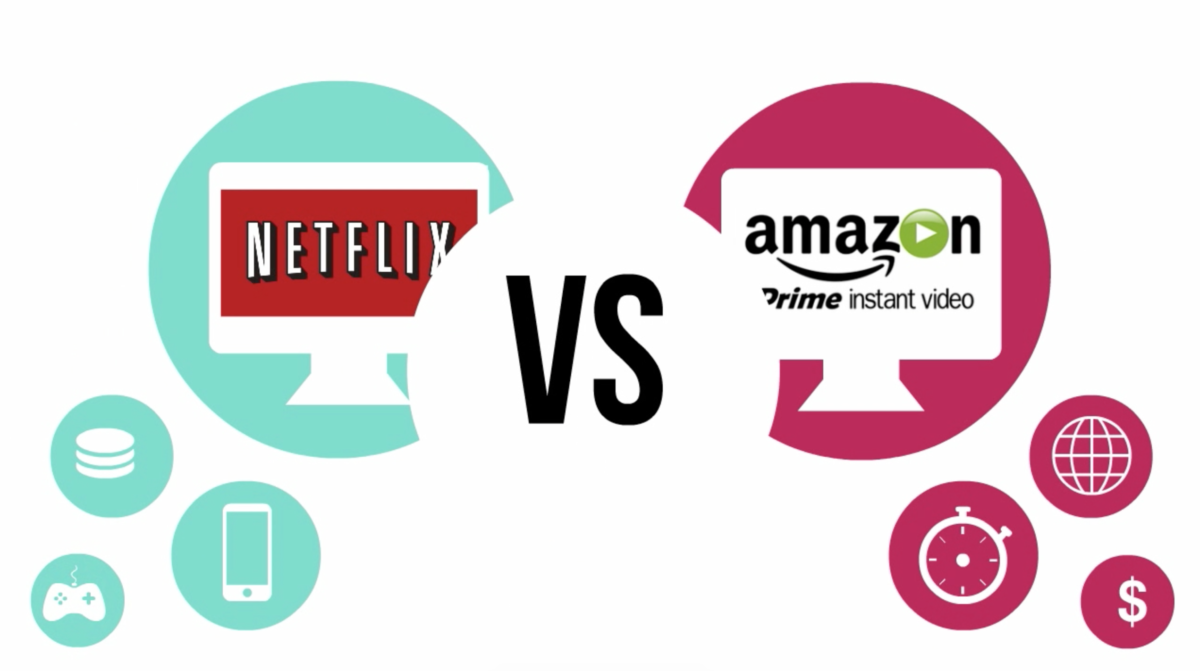In order to understand the exact nature of the concept of technological innovation, we focused on the DVD rental industry and selected two specific instances – Netflix and Amazon Prime Video. We then conducted an in-depth analysis using tools such as an industry life cycle analysis, a SWOT analysis and Moore’s process life cycle. Our subsequent findings are summarized in the following text.
Netflix
Strengths
- Subscription-based membership
- Personalized experience
Weaknesses
- Relies on internet connection
- Basic membership excludes 4K content
Opportunities
- New platforms
- Extension of long-tail
Threats
- Increasing competition
- Reliance on licensing companies
Amazon Video
Strengths
- Offline Viewing
- Amazon Offerings
Weaknesses
- Limited Content
- Maximum of 2 Devices
Opportunities
- Backward-integration
- Expansionary Strategy
Threats
- Piracy
- Danger of Labelling
With an industry life cycle analysis we could shed some light on the state of the industry, though we had to adapt the traditional model. Essentially, Netflix entered the DVD rental industry and did something nobody else had done yet – next-day home delivery. Then Netflix went online, where first, the online streaming services industry was born and second, Netflix rejuvenated the industry and hooked customers with the introduction of subscription-based pricing. These two revelations put Blockbuster out of business. All of a sudden, instead of walking to the nearest store to pick out a movie and rent it, people had instant access right from the comfort of our own homes – and not to one, but thousands of different movies and TV shows. DVD rental had officially been replaced.
Another useful tool was Moore’s process life cycle, though we adapted it once more. The invention phase was marked by the ability to stream movies and TV shows online. The physical movie rental industry’s days suddenly became numbered. At the innovation phase, a monthly subscription plan was created to oust the antiquated pay-per-movie rental scheme. With the rising success of Netflix, competition picked up as they took heed of the early market signals. To join the race quickly, their only solution was to mirror Netflix’ already-proven business model, and standardization in the form of providers creating their own original content has been the result. Interestingly, our analysis found significant evidence that an ostensibly strange industry development may come to fruition in the not-so-distant future. In fact, a few Cable TV providers have already exhibited this behaviour in the creation of their own Movie/TV streaming platforms.
Building from this, our prediction is that streaming services will become a commodity. Cable producers will create online platforms to stream their original content, rather than sell their licenses to firms such as Netflix and Amazon. Therefore, to continue prospering in the future, the streaming services industry should follow in the footsteps of the travel industry, by offering a more personalized service based on customers’ past behaviour. Furthermore, as suggested by Anderson, we believe that these streaming providers should also focus on producing original content, creating a larger niche market.
References used throughout video
BEARNE, S., 2016. How Technology Changed The Travel Industry [Homepage of The Guardian], [Online]. Available: https://www.theguardian.com/media-network/2016/feb/29/technology-internet-transformed-travel-industry-airbnb [9/15, 2016].
CARR, A., 2010. Blockbuster: A Decade of Decline [Homepage of FastCompany], [Online]. Available: https://www.fastcompany.com/1690654/blockbuster-bankruptcy-decade-decline [9/15, 2016].
ELBERSE, A. Should You Invest in the Long Tail. Harvard Business Review 86, 7/8 (2008), 88-96.
GRANADOS, N., KAUFFMAN, R.J., and KING, B. 2008. How Has Electronic Travel Distribution Been Transformed? A Test of the Theory of Newly-Vulnerable Markets. Journal of Management Information Systems 25(2) 73-96.
HITT, M.A., 2007. Academy of Management Perspectives, 21(2), pp. 83-85.
KAUFFMAN, R.J., LI, T. and VAN HECK, E., 2010. Business Network-Based Value Creation in Electronic Commerce. International Journal of Electronic Commerce, 15(1), pp. 113-144.
PORTER, M.E. 2001. Strategy and the Internet. Harvard Business Review 79(3) 62-79.
TAPSCOTT, D. 2001. Rethinking Strategy in a Networked World. Strategy and Business, 24(1) 1-8.
Team Number: 12
Team Names and Student Numbers:
Sergio Di Giacinto 382073sd
Jake Lagaay 379207jl
Shannon Lofgren 379149sl
Matt Overtveld 379156mo

